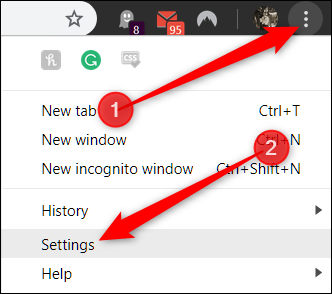
- CHROME MAGIC WINDOW ENABLE HOW TO
- CHROME MAGIC WINDOW ENABLE WINDOWS 10
- CHROME MAGIC WINDOW ENABLE SOFTWARE
- CHROME MAGIC WINDOW ENABLE DOWNLOAD
Type in “ main.cpl ” and press the OK button.This is going to bring up the Run utility. Press the Windows + R keys on your keyboard.If not, try the different methods below to continue troubleshooting. Check if your two finger scroll works properly.If the box is empty, simply click on it to enable it. Here, make sure that the box next to Drag two fingers to scroll is checked. Choose Touchpad from the menu in the left side pane.Alternatively, you can open the app by pressing down the Windows and I keys on your keyboard. Open the Settings app by clicking on the gear icon in the Start menu.
CHROME MAGIC WINDOW ENABLE SOFTWARE
If you, another person using your computer, or any software disabled this feature, two finger scroll will stop working. The very first thing you should do is double check if two finger scroll is enabled in your Mouse Properties. Enable two finger scroll in Mouse Properties The solutions below are targeted to solve different issues that may cause the two finger scroll to stop working in Windows 10. There can be different underlying causes for this problem to come up.
CHROME MAGIC WINDOW ENABLE HOW TO
In this article, you can learn how to fix the two finger scroll not working in Windows 10. Users have been reporting that two finger scroll is not working on Windows 10, making it harder for them to get around their computers.
CHROME MAGIC WINDOW ENABLE WINDOWS 10
As of late, a new issue with Windows 10 has come to the limelight regarding this scroll. Restart Chrome and navigate to chrome://policy to view active policiesĪnyway when i go to chrome://policy i cannot see the Chrome policy just created, even if i can see it under Local Computer Policy, strange isn't it?Īll these configuration was performed under a domain joined laptop.Many laptop users prefer to scroll using two fingers. In Computer Configuration > Administrative Templates > ClassicĪdministrative Templates > Google > Google Chrome > Policies for HTTPĪuthentication enable and configure Authentication server whitelist Add the windows\adm\en-US\chrome.adm template via the dialogĦ. Right-click Administrative Templates, and select Add/Remove Templatesĥ.

Navigate to Local Computer Policy > Computer Configuration >Ĥ.
CHROME MAGIC WINDOW ENABLE DOWNLOAD
Download and unzip the latest Chrome policy templatesģ. I also tried launching Chrome with options (no luck): Chrome.exe -auth-server-whitelist="" -auth-negotiate-delegatewhitelist="" -auth-schemes="digest,ntlm,negotiate"įinally i tried with "Chrome policy templates" following these steps, again well explained in the previous provided link (this is a copy\paste): 1. How to enable Auto Logon User Authentication for Google Chrome. These settings are well explained and shown at this link (i know that it's 7 years ago): I followed lot of forums so i tried these configuration under Internet Settings, Chrome settings and so on, here some examples: 1) Added the URL under "Chrome > Settings > Advanced > Open Proxy Settings > Security (tab) > Local Intranet > Sites (button) > Advanced" andĢ) tried editing the type of user authentication under Local Intranet>Custom Level with "automatic access in the Intranet area only" then "automatic access with current username and password"ģ) I tried to do the same under Trusted SiteĤ) IWS is also enabled under Advanced>Security Anyway if the domain user enters its credential manually, the job is done. 67), the web site still prompt for user and password. With Firefox, domain users, can login without providing any credential. I was able to reach this with Firefox browser by setting these two parameters: -uris=

I would like automatic access against the web page for these users. Users's laptop (Windows S.O.) that need to access this page are also joined to domain.dom.

The web application hosted on this web server is reachable by the URL let's say and it is in the corporate Intranet. IIS 8.5 web server hosting a web application with its Site enabled for Windows authentication (Providers: Negotiate, NTLM), the web server is joined to corporate domain let's say domain.dom.


 0 kommentar(er)
0 kommentar(er)
